By Steven Karnes and Ronald S. Coddington
Union Gen. Samuel P. Carter had a tough job. As provost marshal general of East Tennessee, his Knoxville headquarters was a beehive of activity, as soldiers darted in and out with urgent matters that demanded his attention. Still, he found time to sit for his portrait photograph one day in the spring of 1864.
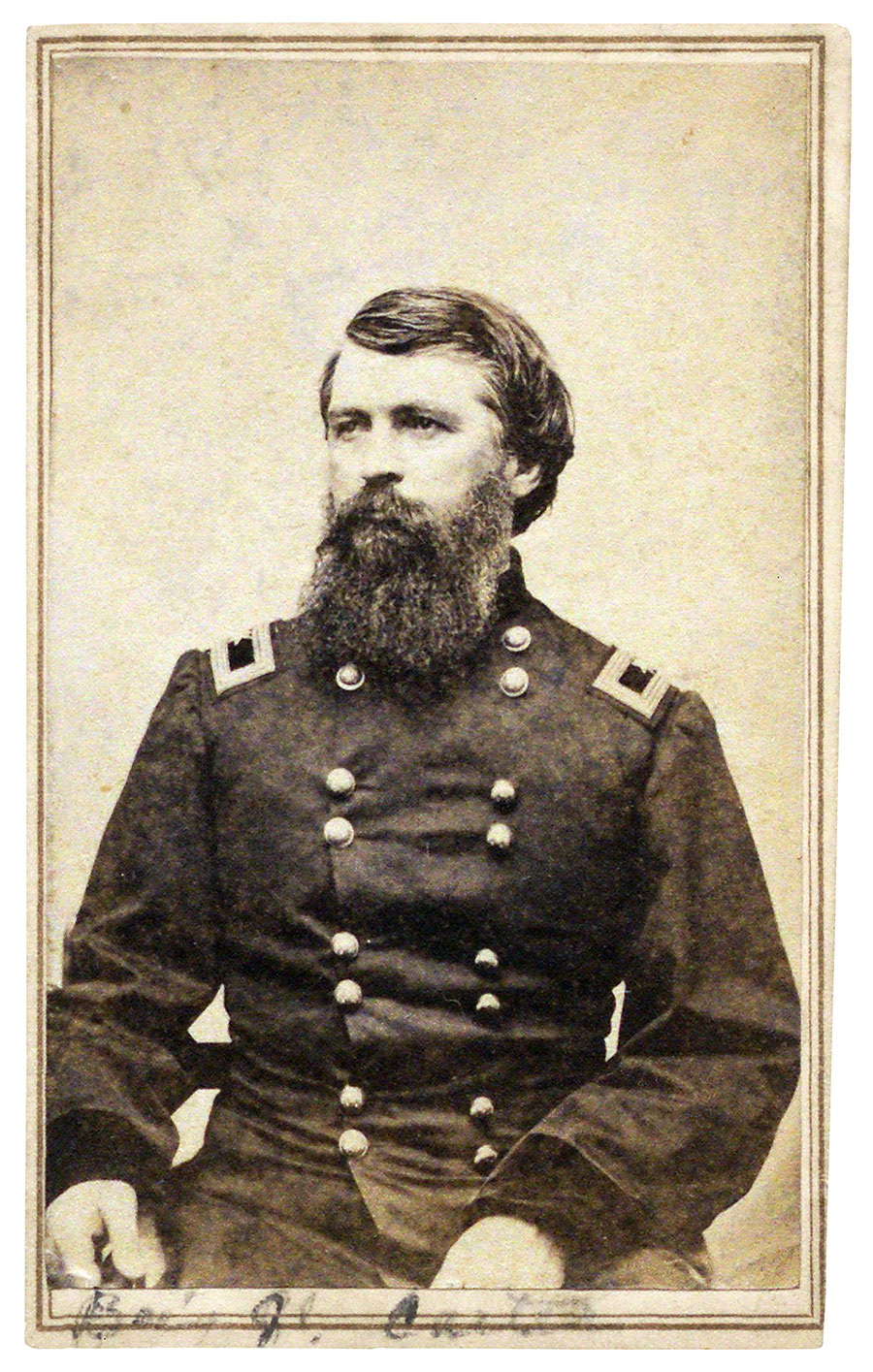
Fortunately for Carter, he did not have far to go—the gallery sat adjacent to his headquarters. The savvy photographer, who strategically located his studio alongside one of the busiest thoroughfares in town, was a newcomer. He was 32-year-old Theodore M. Schleier, the owner of a lucrative gallery in Nashville, who had just expanded his business with a branch in Knoxville.
Schleier, a Prussian immigrant, had started his career as a daguerreotypist in the “first Galleries of New York,” according to a claim in a newspaper advertisement.
Though he may have found his beginnings as a photographer in the North, it was in the South where he built his business. He opened a daguerreian room in New Orleans in the late 1850s, but trouble with a rival almost ended his career. One day in 1857, local photographer James Andrews smashed in the door of Schleier’s room, beat him with an iron poker and destroyed much of his camera equipment. Andrews then threw the seriously injured Schleier out. Charges were brought against Andrews, but later dropped, after officials discovered that he was the legal renter of the room, and that Schleier had previously threatened him. Schleier complained that Andrews tried to shut down his business.
Schleier recovered from his injuries and continued to practice in the Crescent City. Around 1859, Schleier left Louisiana after photographer and fellow Prussian-American Charles C. Giers, proprietor of the grand Southern Photographic Temple of Fine Arts in Nashville, lured him to Tennessee. Giers promoted Schleier as “one of the best Photographers and practical Chemists in the country, using none but the very best materials, possessing facilities unsurpassed for making every known style of pictures.”

Schleier set up an independent gallery in Nashville sometime in 1862 or 1863. By this time, the city was under federal military occupation. The sheer number of surviving cartes de visite with his back mark indicate that a steady stream of Union soldiers passed through his gallery during the war years. The images most likely had generated enough income to fund his branch gallery in Knoxville, which opened about January 1864, though he continued to maintain his main gallery in Nashville. To promote his new Knoxville branch, Schleier played off his proximity to Gen. Carter when he advertised his new gallery as the “Headquarters for Pictures” in the Knoxville Whig.
In addition to the many soldier portraits credited to his galleries, Schleier also photographed prominent city buildings and other landmarks, including a four-panel panorama of Knoxville in 1865.
Two years later, he made Knoxville his home base, and re-launched his studio as T.M. Schleier’s Fine Art Gallery. He brought along his wife, Caroline, whom he had married in Nashville during the war, and his young daughter, Matilda, who would later follow in her father’s footsteps as a photographer. He also employed Caroline’s brothers, Joseph and Charles Knaffl, who eventually opened their own gallery. The Knaffl’s father, Rudolph, was an Austrian-born physician who served as surgeon of the U.S. 10th Tennessee Infantry.
Schleier was also an inventor. With the advent of electricity, he pioneered artificial lighting in his studio. He received patents for several inventions, including a camera stand, a brick cleaner, a chair that could be converted into a table, and, along with his father-in-law, a fan powered by a rocking chair.
Active in politics, Schleier was named a member of Tennessee’s delegation to the 1872 Republican National Convention that nominated President Ulysses S. Grant for a second term. In 1890, President Benjamin Harrison appointed Schleier as U.S. Consul to Amsterdam, a post he held until Democrats reclaimed the White House in 1892.
Schleier died in New York City in 1908. He was 76. His death went largely unnoticed, but his legacy of abundant Union soldier portraits survives.
Survey of studio scenes from Schleier’s Nashville gallery
Balutsrade with Newel post pedestal
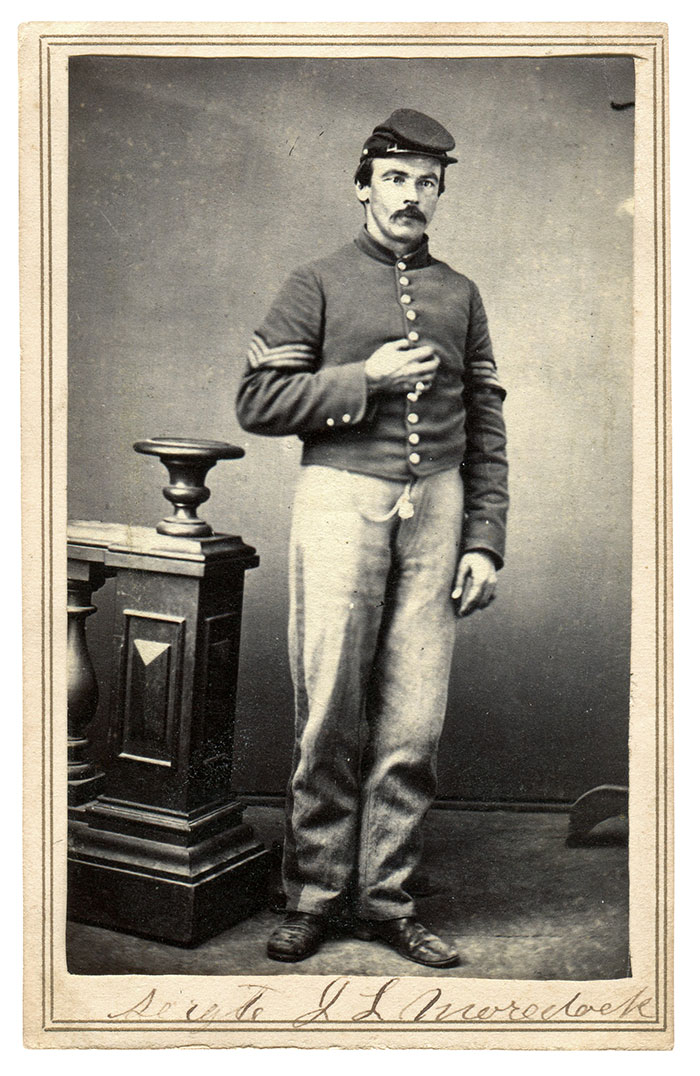
Kentucky-born James Murdock left his Illinois farm in the summer of 1862 and enlisted as a private in the 102nd Illinois Infantry. He survived the Atlanta Campaign and March to the Sea, and mustered out as a sergeant in 1865.
Unadorned

Two Union officers with muddy boots stand with swords drawn, a signal of authority over enlisted men. They are identified only as “Capt. Martin” and “Lt. Kile.”
Ornate camp scene and chair
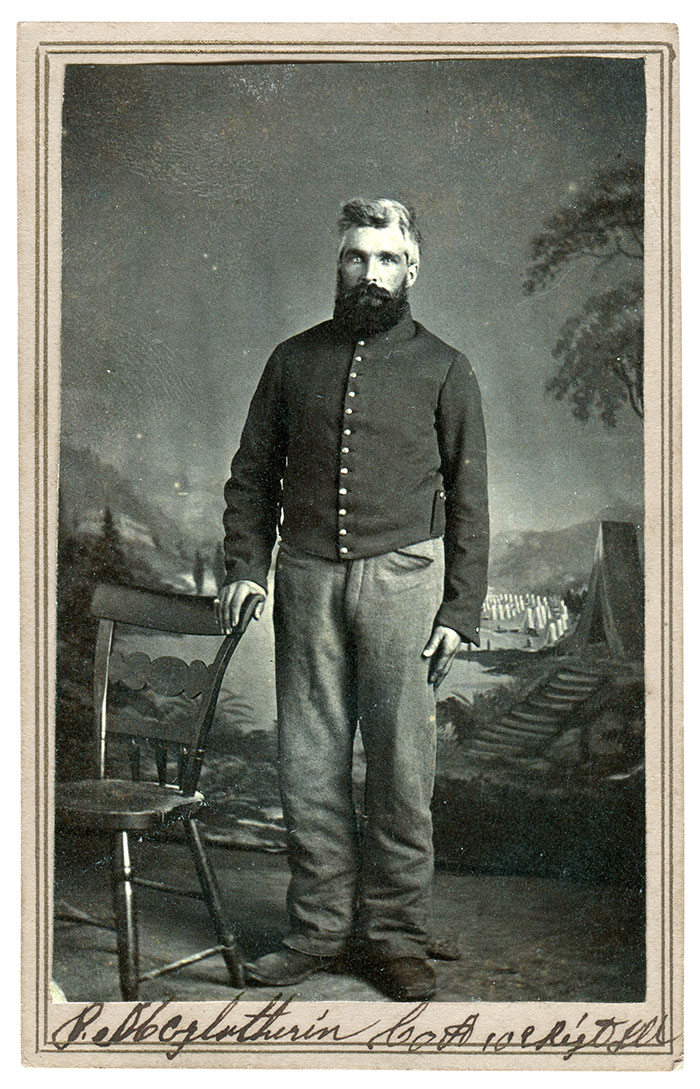
Pvt. Perry McLaughlin, a Pennsylvania-born farmer, joined the 102nd Illinois Infantry in September 1862 for a three-year term of enlistment. He mustered out with his comrades in Washington in June 1865.
Drapes and balustrade
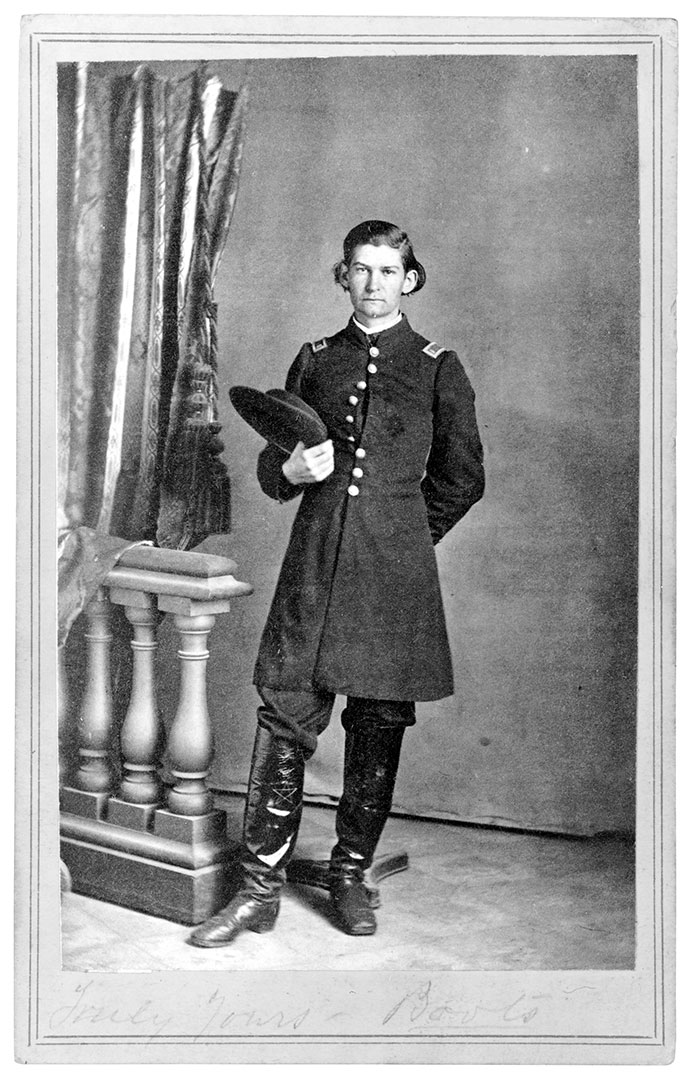
“Truly Yours—Boots” may be a reference to the fine pair of footwear with the star pattern worn by an officer identified as Albert Sidney Smith. His image was part of an album kept by Capt. Adolph Metzner of the 32nd Indiana Infantry.
Paneling
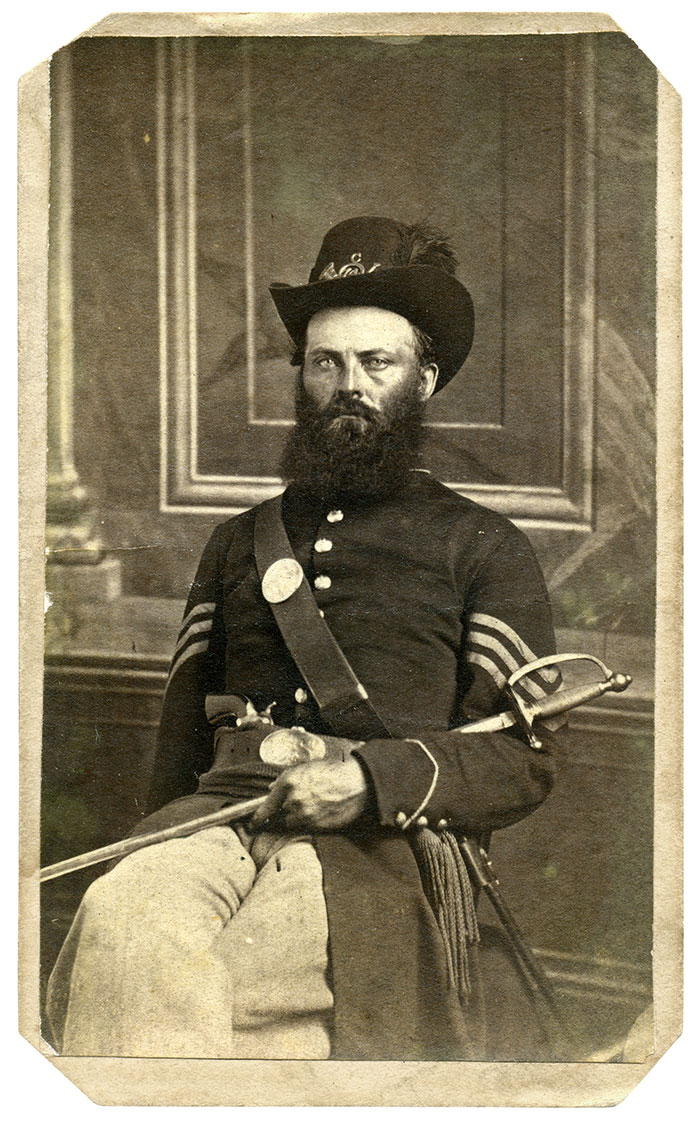
Virginia-born and Ohio raised, Sgt. John William Baldwin joined the 74th Ohio Infantry in the fall of 1861 and fought at the battles of Stones River and Chickamauga, and in the Atlanta Campaign. He mustered out in 1864 as a second lieutenant.
Unadorned with table and chair
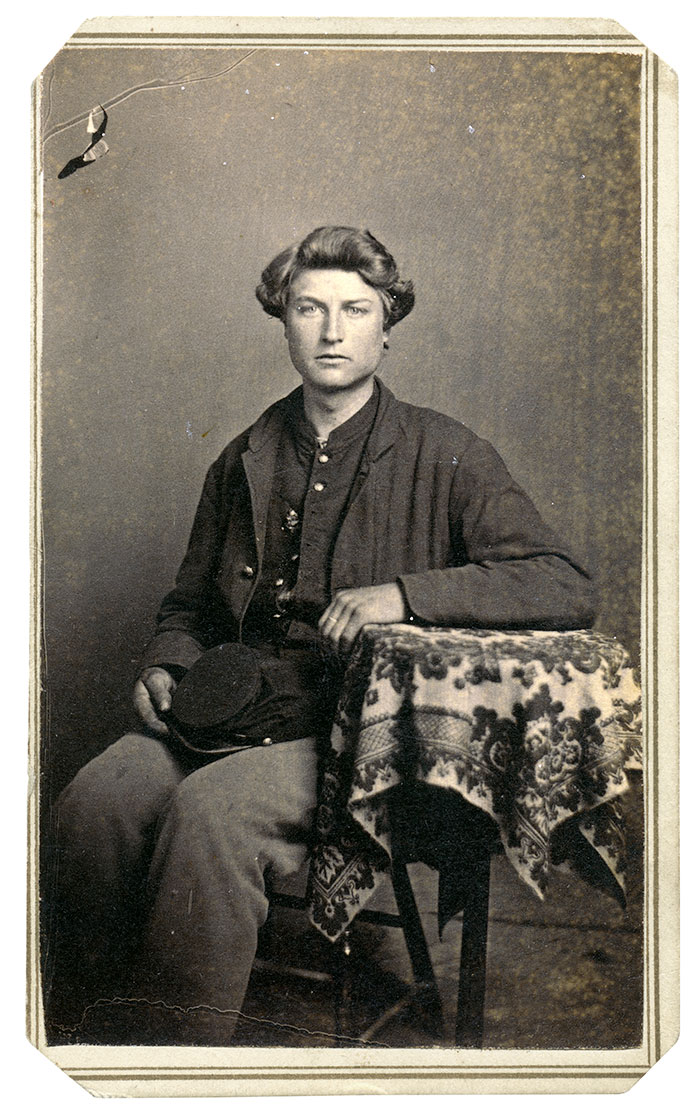
An elaborately coiffed Union private dressed in a four-button sack coat sits with his cap.
Sources: Knoxville Whig, Jan. 9, 1864; Times-Picayune (New Orleans), Feb. 14, 1857; Peter E. Palmquist and Thomas R. Kailbourn, Pioneer Photographers from the Mississippi to the Continental Divide: A Biographical Dictionary, 1839-1865; Special Collections Online, University of Tennessee; Daily Nashville Patriot, July 12, 1859; James A. Hoobler, “T.M. Schleier, Photographer,” Tennessee Historical Quarterly (Fall 1986); Knoxville Whig, Oct. 9, 1867.
Steven Karnes is a contributing editor to MI. While his occupation is working in the Land Title Insurance Industry, Steve’s avocation and passion is in the collecting and studying of Civil War images, especially cartes de visite. Steve also has a strong interest in the archival and preservation of these historic images and their legacy.
Ronald S. Coddington is editor and publisher of MI.
SPREAD THE WORD: We encourage you to share this story on social media and elsewhere to educate and raise awareness. If you wish to use any image on this page for another purpose, please request permission.
LEARN MORE about Military Images, America’s only magazine dedicated to showcasing, interpreting and preserving Civil War portrait photography.
VISIT OUR STORE to subscribe, renew a subscription, and more.

